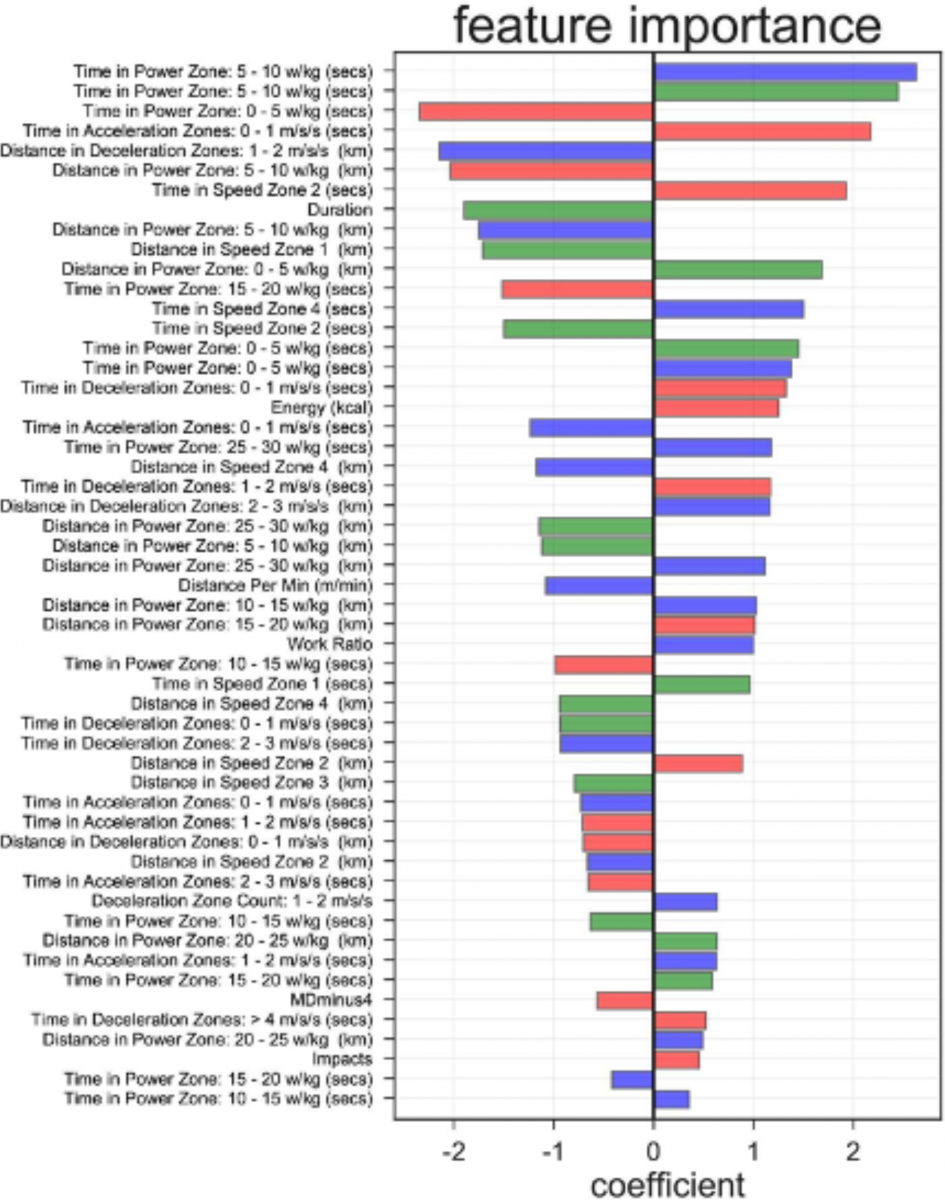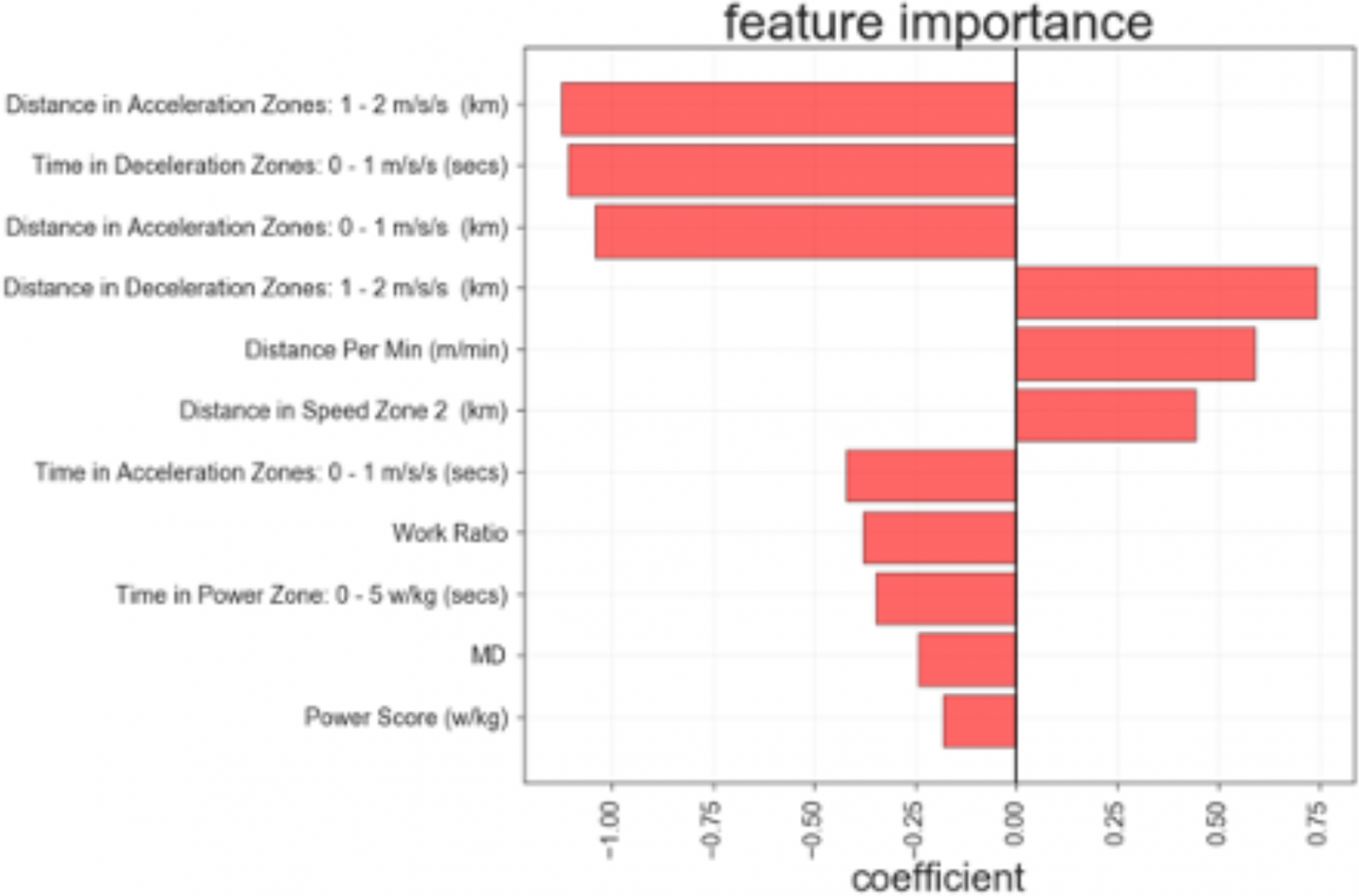Relationship between External and Internal Workloads in Elite Soccer Players
Monitoring training load is a fundamental process to maximize the physical capacity of athletes and to manage their fatigue throughout the season. An athlete’s training load can be quantified by external (e.g., global position system and video analysis) and internal parameters (e.g., rate of perceived exertion, heart rate, and lactate). The external training load represents the dose performed, while the internal training load reflects the psycho-physiological response of the athlete.
The game-based nature of team sports can generate inter-individual variation in external training load, resulting in different internal training loads. In soccer the number of matches played during the season together with the inter-individual variation related to physical levels, role positions, and technical and tactical requirements can lead to a training imbalance, leaving some athletes at risk of overtraining and others failing to reach an adequate training stimulus that could potentially enhance the risk of injuries. Therefore, the implementation of monitoring models able to understand which specific training doses should be applied to individual athletes, and which markers of external load influence the athletes’ internal load should be studied.
Recently, the relationship between internal- and external-load parameters has been investigated to demonstrate that both the Rate of Perceived Exertion (RPE; it is a numerical scale that ranges from 0 to 10, where 0 means "no exertion at all" and 10 means "maximal exertion") and the training load (S-RPE; it is the product between training duration and RPE) are significantly related to several indicators of external physical load (i.e., high-speed running distance (>14.4 km/h), number of impacts, and number of accelerations (>3 ms2). In particular, RPE is related to the stress that the players support in the previous week (Figure 1), whereas the S-RPE is only affected by the workload performed in the current training session (Figure 2). In addition, the exertion perceived by players is affected by the distance in days to the matches. In particular, players underestimate and overestimate the RPE and S-RPE in the days long before the match and in the days close to the matches, respectively. Hence, the RPE and S-RPE seem to be affected by the psychological tension caused by the official game that has to be taken into consideration by athletic trainers and coaches during the evaluation of the players’ internal load during the training sessions.
Therefore, athletic trainers and coaches could obtain more information about the internal load of their players by assessing both RPE and S-RPE. In this way, they could have a complete overview of the training characteristics that affect internal load to schedule the best training periodization for their athletes. The combination of these findings with an algorithm that automatically generates sport training programs based on internal loads could permit to schedule more interpretable training plans based on the assessment of the influence of different parameters on RPE and S-RPE.

Figure 1. The figure shows the feature selected and the importance of these features in the classifiers. The red bars reflect the Daily features; the green bars reflect the Acute features; the blue bars reflect the Acute: Chronic Workload Ratio (ACWR) features. The sign of the coefficient reflects the influence of the features on the RPE. For example, the lower is the Time in Power zone 0–5 w/kg (secs), the higher is the effort perceived by players during the current training or match.

Figure 2. The figure shows the feature selected and the importance of the features in the classifiers. The red bars reflect the Daily features; the green bars reflect the Acute features; the blue bars reflect the ACWR features. The sign of the coefficient reflects the influence of the features on the RPE. For example, the lower is the Time in Deceleration zone 0-1 m/s/s (km), the higher is the effort perceived by players during the current training or match.
Written by: Luca Pappalardo

